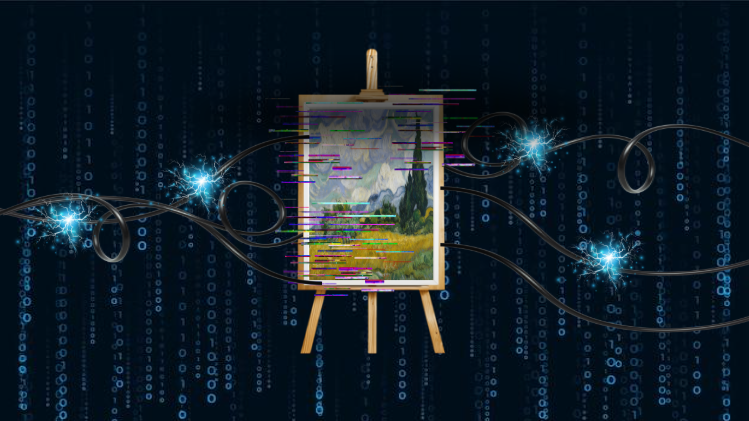When looking at past depictions of what people thought the future would be like, a common exciting prediction was that robots and artificial intelligence would be present in people’s everyday lives. Fast forward to 2025, and AI has planted itself firmly in our society and culture. Today, people live in a world in which one can be given an essay, a piece of art, or a conversation partner, all from a single source. All of this appears to be part of a marvelous leap forward in human history, which must be bettering society. However, as with all things, the truth is slightly more complicated.
There is a good chance that if someone were asked if they had seen AI-generated content on the internet, they would say yes, and likely wouldn’t provide their answer in a positive tone. For some time now, AI-generated content has made up a sizable percentage of all media online. While several sites have made major efforts to contain or restrict it, especially if they can’t validate that a real person posted it, some have become infested. All one has to do is look at the plight of Facebook.
Over the past few years, a mass exodus of younger adults has occurred. This has left the site primarily filled with older, less tech-savvy users. Because of this, the content that once filled the website has experienced a sort of drought, which those managing AI bots were very capable of capitalizing on. Over 40% of the platform has been estimated as being reliant on AI-generated content. This content is primarily images of disadvantaged people in society (i.e. impoverished children, amputees, the elderly) begging for likes and support, which older users, none the wiser, are falling for. But it’s not just engagement being asked for; many of these posts are accompanied by spam links, which people who haven’t been taught how to recognize them are falling for.
Facebook isn’t the only social media site that is experiencing major problems because of bots, though. Twitter has also become overrun with spam bots spreading misinformation. YouTube has unwillingly become a host to AI videos displaying gratuitous content as well. The frequency of this has ascended beyond being a headache to managers of the sites, to now posing a significant threat and problem to people.
This hasn’t been the only instance of images generating problems, though. AI images have been the source of massive controversy from actual human artists who claim that they are being replaced. Many feel that people are being deterred from choosing to commission and see the works of artists by their ability to simply make AI create it for them. According to the Bureau of Labor Statistics, job growth in the artistic fields is slowing, likely due to many companies now opting to use AI-generated artwork rather than paying a person to make it themselves. Their projection does not, however, account for those self-employed, who make up a significant number of artists themselves, and with how much ire has been reflected by them, it’s hard to say that their concerns aren’t valid.
It’s not just money being stolen from artists but also their art itself. In order for AI programs to learn, they must observe other images from around the internet. This means that they seek out images and employ the techniques used regardless of whether or not the artist consented to having it used for training artificial intelligence. This creates a problem because it means that if an artist has a particular style, it can be stolen, and money that would have gone towards commissioning them would instead be put into software that could replicate it. Many lawsuits have been filed over this, some of which are still ongoing. However, in the lawsuit Andersen v. Stability AI, the Northern District of California Court found that this process was in violation of copyright law, so it appears that, in the eyes of the law at least, AI does in fact steal from artists.
With all this taken into consideration, it might seem like AI is actually a creation whose existence is wasteful and evil. This, however, is only looking at one purpose. Harvard Medical School has managed to produce an AI that is capable of detecting nineteen different types of cancer with 94% accuracy. A team from Princeton has managed to develop one that has managed to significantly reduce the ecological impact of nuclear energy. Clearly, humanity wields a tool capable of producing never-before-seen good. The problem is that it’s predominantly used for the opposite.
Sources
https://www.bls.gov/ooh/arts-and-design/
https://www.npr.org/2024/05/14/1251072726/ai-spam-images-facebook-linkedin-threads-meta
https://copyrightalliance.org/ai-lawsuit-developments-2024-review/
https://engineering.princeton.edu/news/2024/02/21/engineers-use-ai-wrangle-fusion-power-grid








